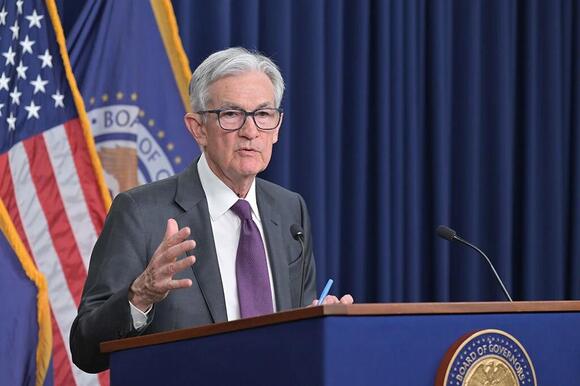Everyday Economics: The Fed's balancing act: Why this week matters more than you think - NewsBreak
By Orphe Divounguy | The Center Square contributor,
5 hours ago
(The Center Square) – This week brings the Federal Reserve's most anticipated meeting of the year so far. When Chair Jerome Powell steps to the podium Wednesday afternoon, he'll face a puzzle that would challenge any central banker: an economy sending mixed signals while trade policy uncertainty clouds the horizon.
The Numbers Tell Two Stories
The labor market is flashing warning signs that can't be ignored. Initial unemployment claims have held at 248,000 for the week ending June 7, marking an eight-month high. More telling is that continued unemployment claims have surged roughly 7% above 2024 levels, with only half of U.S. industries now adding jobs. If this trend continues, we could see unemployment hit or exceed the Fed's March projection of 4.4% by summer's end.
Yet inflation presents a more encouraging picture. The latest PCE inflation reading came in at 2.1% in April, well below the Fed's March projection of 2.7% for 2025. Core PCE inflation, the Fed's preferred measure, sits at 2.5% – also below their 2.8% forecast. These numbers suggest the Fed's restrictive policy stance is working, perhaps better than expected.
The Tariff Wild Card
What's keeping Fed officials awake at night isn't current data – it's the uncertainty surrounding tariff policy. As Powell emphasized in May, "the right thing to do is await further clarity" on how trade measures will impact the economy. The Fed learned from the 2018-2019 trade war that tariffs can simultaneously boost inflation while dampening growth, creating a policy nightmare.
Market expectations reflect this caution, with futures pricing showing almost no chance of a rate cut this week and only a one-in-five probability of a move at the July meeting. This marks a significant shift from the start of the year when traders were betting on multiple cuts starting this summer.
Consumer Spending, Home Buying Signal Trouble Ahead
The economic weakness is starting to show up where it matters most for everyday Americans. Home sales remain flat compared to last year, bouncing along the bottom causing homebuilder confidence to remain weak and housing starts to trend lower. This housing market stagnation reflects both high borrowing costs and consumer uncertainty.
This trend could worsen if consumers pull back and increase precautionary savings. Retail sales are likely to weaken in coming the months as households prepare for an uncertain economic environment.
What Wednesday's Decision Means
Unlike recent meetings, this week's gathering will include updated economic projections and the closely watched "dot plot" showing where individual Fed members expect interest rates to head. These forecasts will be crucial for understanding how policymakers view the trade-off between supporting a softening labor market and managing tariff-related inflation risks.
Powell faces a delicate communication challenge. He needs to signal that the Fed stands ready to support the economy if conditions deteriorate while avoiding any appearance of bowing to political pressure for easier policy.
The Bottom Line
The Fed will almost certainly hold rates steady this week, but the accompanying commentary and projections will matter far more than the decision itself. With the labor market showing clear signs of cooling and inflation approaching the Fed's target, the central bank is positioned to cut rates later this year.









